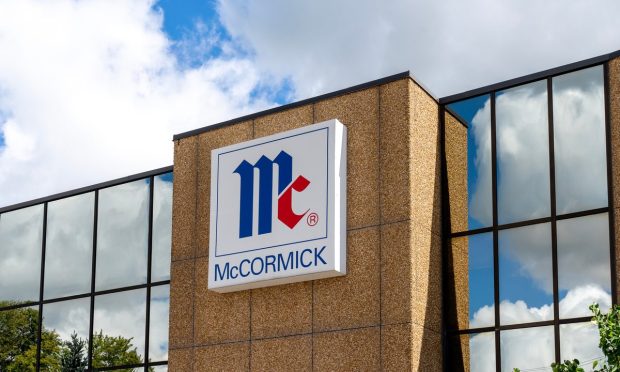
Even as consumers seek out low-cost options, they choose brand names when given a budget-friendly choice, according to McCormick.
The flavors and seasonings giant shared on a call with analysts Tuesday (Oct. 3) discussing its third-quarter earnings results that it is seeing continued value-seeking behavior among grocery shoppers — specifically, buying in bulk and purchasing lower-priced products.
“We’re seeing value play out through many different types of actions from the consumer,” McCormick President and CEO Brendan Foley said on the call. “Some are going to larger sizes. …The other way value presents itself too is opportunities like this opening price point.”
As brands across the sector have raised their prices, it has “created a price pocket” that the company moved into with its low-priced Lawry’s brand, offering a name-brand alternative to private-label options for consumers who are hesitant to trade down to store brands, he said.
“A lot of consumers still prefer [name] brands, and it’s allowing them to move towards a brand that’s a lower opening price point and fills the need,” Foley said.
Many consumers have traded down on grocery in recent years, but more have not.
PYMNTS Intelligence from the study “Consumer Inflation Sentiment Report: Consumers Cut Back by Trading Down,” which is based on a survey of more than 2,000 U.S. consumers, found that around one-third of grocery shoppers have downgraded from their favorite brands to save money. Plus, 47% have switched to merchants with lower prices for at least one grocery product.
Not only are consumers buying lower-priced items, but where possible, they are buying less overall. The same study found that 57% of shoppers reported cutting down on nonessential grocery spending, and food brands and grocers alike have noted similar trends.
Yet buying in bulk appears to present shoppers with an alternative to cutting back — one with which they feel they are making the more frugal choice, but they continue to get the items they want. Notably, consumers who do this may end up consuming more than those who stick to the standard sizes.
“What’s … interesting about larger sizes, at least in the categories that we have, especially spices and seasonings, is that the purchase rate is still just as fast as it was with a smaller size,” Foley said. “So, people are going through when they have it in the household. They’re going through [it] just as fast or more quickly.”
Overall, consumers are looking for ways to stretch their grocery budgets where possible. According to the study “Installment Plans Becoming a Key Part of Shopper’s Toolkit,” a PYMNTS Intelligence and Splitit collaboration, of the 60% of consumers who have used some type of installment payment plan in the past 12 months, 34% have done so to buy groceries. That means, all in all, about 1 in 5 consumers pay for groceries in installments.
Even as grocery inflation has slowed, it seems that some of the habit changes have stuck, as grocery giant Kroger observed on an earnings call in June.
“Typically, during a more challenged economic environment, … we do see more customers engage with Our Brands products, and as they start to see the quality and the value, often, we find there’s a higher penetration level that occurs during that time,” Kroger Chief Financial Officer Gary Millerchip told analysts at the time. “And typically, it stays at a more elevated level even after the economic challenges have dissipated.”